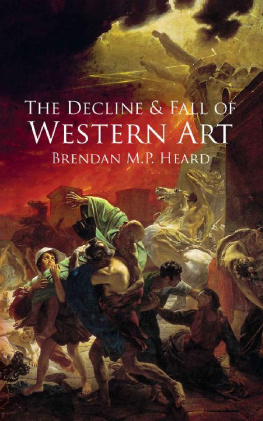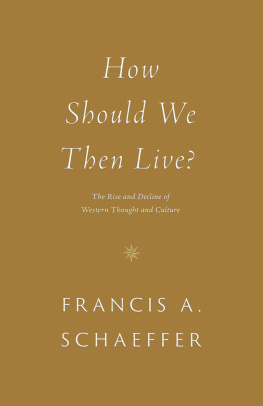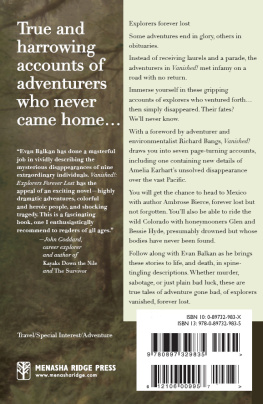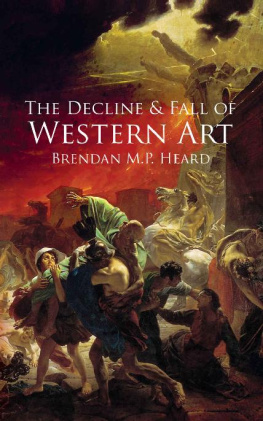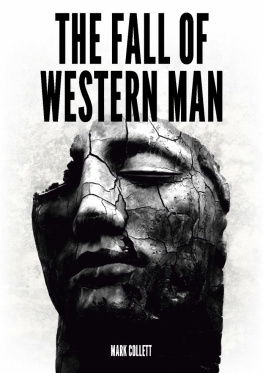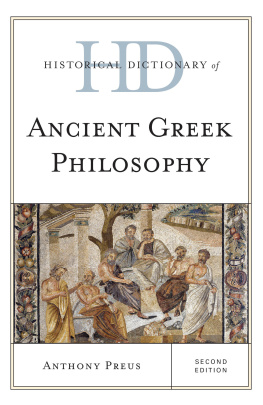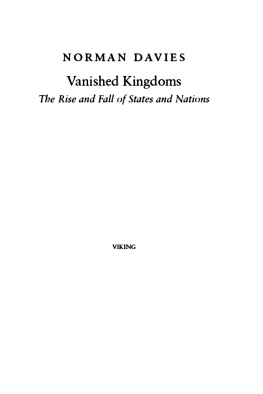Brendan M.P. Heard - The Decline and Fall of Western Art
Here you can read online Brendan M.P. Heard - The Decline and Fall of Western Art full text of the book (entire story) in english for free. Download pdf and epub, get meaning, cover and reviews about this ebook. year: 2018, genre: Art. Description of the work, (preface) as well as reviews are available. Best literature library LitArk.com created for fans of good reading and offers a wide selection of genres:
Romance novel
Science fiction
Adventure
Detective
Science
History
Home and family
Prose
Art
Politics
Computer
Non-fiction
Religion
Business
Children
Humor
Choose a favorite category and find really read worthwhile books. Enjoy immersion in the world of imagination, feel the emotions of the characters or learn something new for yourself, make an fascinating discovery.
- Book:The Decline and Fall of Western Art
- Author:
- Genre:
- Year:2018
- Rating:4 / 5
- Favourites:Add to favourites
- Your mark:
- 80
- 1
- 2
- 3
- 4
- 5
The Decline and Fall of Western Art: summary, description and annotation
We offer to read an annotation, description, summary or preface (depends on what the author of the book "The Decline and Fall of Western Art" wrote himself). If you haven't found the necessary information about the book — write in the comments, we will try to find it.
The Decline and Fall of Western Art — read online for free the complete book (whole text) full work
Below is the text of the book, divided by pages. System saving the place of the last page read, allows you to conveniently read the book "The Decline and Fall of Western Art" online for free, without having to search again every time where you left off. Put a bookmark, and you can go to the page where you finished reading at any time.
Font size:
Interval:
Bookmark:

Special thanks to my long-suffering wife. Also to Sam Richardson, Holly Hazeltree, Jikke Gruwel, & Alice Cogan. Cover image: Karl Briullov - The Last Day of Pompeii. 1830, Public Domain.
Amazon Self-Published. 978-1720557852 | MMXVII
Table of Contents
Introduction
1: Art has been taken from us
2: Modernist art is a weapon
PART 1: What is Western art?
1: Hellenistic origins of Western art
2: Platonic Forms and the Golden Ratio
PART 2: How art has declined
Art in decline, a tripartite assailment
I: The philosophy of Modernism
1: Understanding Artspeak
2: Painting
3: The origins of Modernism
4: A truthful time line of art history
5: Modernism: What is it really?
6: Modernist movements since Expressionism
7: Turner Prize: Conceptualist asylum
8: The importance of architecture
II: The rise of materialism and the loss of idealism
1: The average person has lost touch with art
2. Rise of political correctness
3: The lie of equality
4: Relativism: Marxist buzzwords as closed tautology
5: Who wants to fight for a Modernist world?
6: Art school - The fantastic joke
7: Feminism and education
III: Industrialization, and corporate mass production
1: Art and science
2: Digital art, realism, photography & cinema
PART 3: The path back to a healthy art
1: Action versus work in a technological age
2. The power of myth
3. Spirituality and primordial tradition: Western
religion and the plane of perfect reason
4: Hierarchical industrialization
5: Form and function: the Kaiser and Barnett Newman
6. Return to the guild system
7: Return to the atelier method
C oncluding Remarks
1: Twilight of the Western arts
2: Can we halt decline?
3: The river
Art has been taken from us
Youre so ugly you could be a modern art masterpiece.
- Gunnery Sergeant Hartman, Stanley Kubricks Full Metal Jacket, 1987.
T he art we call Modernism is best described as a psychological disease, the goal of which is nothing less than the total destruction of art which it has more or less successfully done.
Modernism (or Postmodernism) is a philosophy which now dominates the culture, overshadowing us artistically, spiritually, politically and socially. We are immersed in it constantly, so that now virtually nothing is free from its infectious absurdity. From our architecture to our fashion and our way of speaking, to the very ideas you are permitted to express; it is the victory of the final remaining virtue of non-judgementalism. All other virtues have been discarded. What is worse is that it is based entirely on lies and conformism to foggy, relativist thinking. And all this was achieved not by warfare or political force but by obscuring and changing the definition of art.
In terms of creativity, Modernism does the opposite of what it proposes: it claims to unshackle the mind to endless potentiality but in reality creates only illusory, fruitless possibilities and then makes us slaves to them. It traps creativity in a fabricated labyrinth of gimmick that blocks the light of truth and beauty. In the name of this illusory freedom, we dubiously welcome Modernism into our attitudes, unsure or unable to see through its masquerade despite our disgust at its works. We are blinded as to how this monster achieved its total victory, dancing triumphantly over our once lofty sthetic values. We laugh nervously at its outwardly harmless abstract trinkets, unarmed against its weaponised nihilism, confused by its very existence.

Jean Auguste Dominique Ingres, The Source (1856), Muse dOrsay, Paris.
Wassily Kandinsky, Kandinskys first abstract watercolor, 1910.
We innately hate this alien concept but are trained from birth to believe it is the key that has unlocked historic fetters, that this false new definition is in fact the eternal concept of art. When in truth it is a ruse no older than a century. It arms the aggregate populace against its own best interests with mind-control masked as matronly lenience (a laxness of rules). To this abstract god we sacrifice beauty and tradition, and are rewarded with consumerism and loss of identity. We dismantle our beautiful cathedrals and villages for shopping malls and industrial parks, blind to the destruction we wreak upon ourselves. Moral and intellectual obscurity flow in Modernisms wake, as our bribed and brainwashed scholars make pathetic excuses for unhealthy and preposterous cultural tokens, if only so they can cling to a masochistic, virtue signalling lie for one moment longer. And not because the lie is comforting but only because they are accustomed to it. Natural beauty, an innate truth, has been repackaged as unnatural and evil. For we unfortunates today, the idea that the man-made world should be beautiful is little more than a distant fairy tale. This was not previously the case.
Whether it is an imposition or a strange cyclical inevitability, decent, intelligent people must begin to combat Modernism in daily life. Far too much ground has been given already. Modernism is not a fleeting trend but the catalyst symptom of our lingering death by cultural self-devouring. Our books are censored and trite, our music is base and soulless, our fine visual arts virtually non-existent, and our cityscapes an eyesore of meaningless glass boxes.
From the moment Westerners were duped out of their beauty values, our societies began to lose direction. We gambled with tradition on this promise of a world without constraints, where endless new ideas fell like rain. Of course, nothing could have proven farther from the truth. The world did not immediately burst its banks with endless new possibilities. Instead, a Pied Piper enchanted us down a merry lane where splatter-painting and naked performance art make for enlightened culture. All that remains now is the false illusion of progress gained by extracting shrinking percentages of profit from the dwindling trends spawned from long dead ideas. Reboots and re-imaginings of once vital concepts that now gather dust. The corporate marketing department decrees populist art trends from a vantage of the purest mercantilism. Chain stores will invest heavily in manipulative advertising propaganda to squeeze profits by 0.001 per cent, on what is ultimately a worthless plastic item or cultural token (itself the ghost of a once virile craft), exploiting the remnants of creative forebears who might as well be aliens to these artless marketing gurus. All our efforts are expended uselessly, our artistic output controlled, censored, automated and lifeless.
And through all of this, only a false social barrier prevents us from the raw creativity that in reality sets all human action in motion. They fear this creativity as it is socially chaotic, tribalist, unsafe, uncontrolled and unquantifiable (despite adhering to a stricter order). So, how to reclaim this rightful vitality? The first step would be acknowledging that we are in decline. To stand up to them, to no longer scoff at the nonsensical art galleries privately, but to complain about them publicly. The root may be long dead as the fruit only now withers on the vine, but in death there will be rebirth. So luckily for us, bad as it is, change is inevitable. The only question is how much of the old and beautiful art will be lost in the transition as surely the cowards who are so blindly committed to their own suicide will wish to take as much of the past as possible with them to oblivion. Destruction is the price of rebirth but rebirth is also hope of escape from a sullied and pretentious system, gone sour with age and misuse. As Heraclitus said: there is nothing permanent except change. Growth and change are necessary and therefore imminent.
Font size:
Interval:
Bookmark:
Similar books «The Decline and Fall of Western Art»
Look at similar books to The Decline and Fall of Western Art. We have selected literature similar in name and meaning in the hope of providing readers with more options to find new, interesting, not yet read works.
Discussion, reviews of the book The Decline and Fall of Western Art and just readers' own opinions. Leave your comments, write what you think about the work, its meaning or the main characters. Specify what exactly you liked and what you didn't like, and why you think so.

